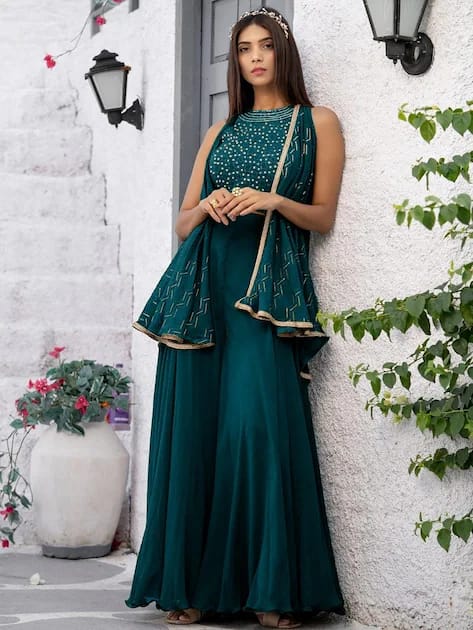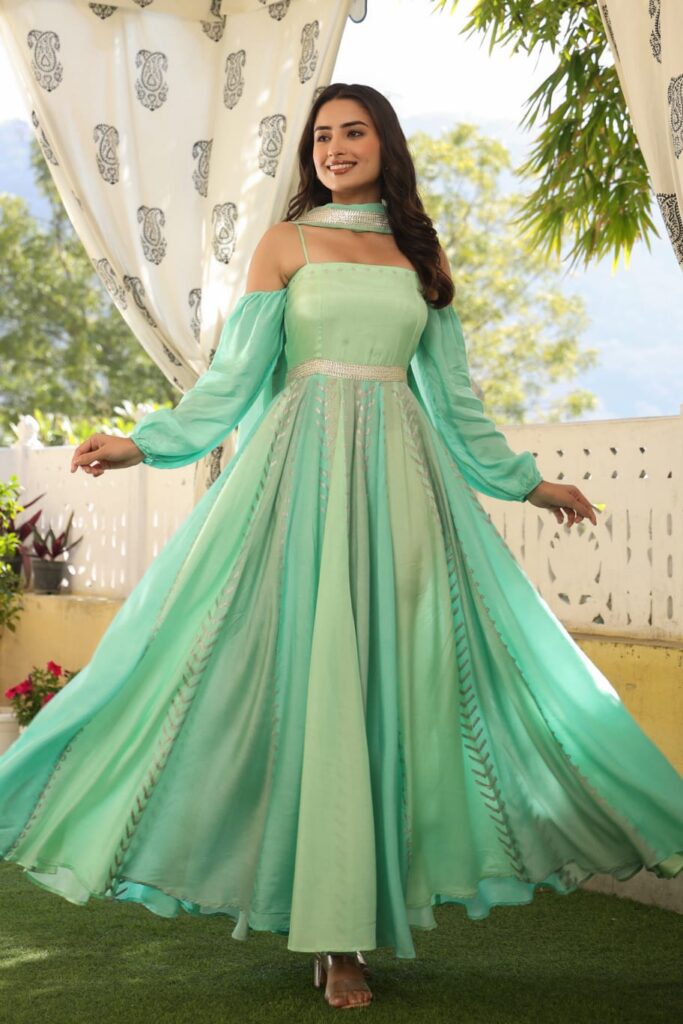

Table of Contents
![]() Introduction
Introduction
Fashion is a dynamic and ever-evolving industry influenced by a myriad of factors, including culture, geography, and history. Cultural and regional trends play a pivotal role in shaping the fashion landscape, offering a rich tapestry of styles, fabrics, and traditions. These trends not only reflect the unique identities of different regions but also contribute to the global fashion dialogue. This blog explores the significance of cultural and regional trends, their impact on global fashion, and the ways in which they are celebrated and adapted in contemporary fashion.
The Significance of Cultural and Regional Trends
Cultural Identity:
- *Expression of Heritage:* Cultural fashion trends are a means of expressing one’s heritage and cultural identity. They help preserve traditions and celebrate the uniqueness of different cultures. (Regional Trends)
- *Symbolism and Meaning:* Many traditional garments and accessories carry symbolic meanings. For example, the colors, patterns, and fabrics used in clothing can signify social status, marital status, or religious beliefs.(Regional Trends)
Regional Adaptations:
- Climate and Geography: The climate and geographical features of a region greatly influence the types of clothing worn. For example, people in colder regions wear layered and insulated clothing, while those in warmer climates opt for lightweight and breathable fabrics.
- Local Resources: The availability of local resources, such as textiles and dyes, also shapes regional fashion. For instance, the use of silk in China and India is due to the availability of silk-producing worms, while wool is prominent in regions with sheep farming.
- Unlocking Positive Sentiment: 80% of Brands Embrace AI for Enhanced Customer Insights
Cultural Exchange and Fusion:
- Globalization: In the age of globalization, cultural and regional trends have transcended borders. People around the world are increasingly exposed to different cultures, leading to a fusion of styles and the creation of new fashion trends.
- Cultural Appreciation: Wearing clothing from different cultures can be a way to appreciate and celebrate diversity. However, it’s essential to approach this with respect and understanding to avoid cultural appropriation. Exploring Cultural and Regional Trends
- Transforming Negativity: 54% of Companies Mitigate Brand Damage Through Sentiment Analysis.
Fashion is a mirror of cultural diversity. Each region has its own distinct style, influenced by local customs, traditions, and history. Let’s explore some of the key cultural and regional fashion trends from around the world:
- Indian Fashion Trends:
- Vibrant Colors and Rich Fabrics: Indian fashion is known for its vibrant colors, intricate embroideries, and rich fabrics like silk, cotton, and wool. Traditional garments like sarees, lehengas, and kurta-pajamas are adorned with zari, zardozi, and mirror work.
- Regional Variations: India has a diverse range of regional clothing styles. For example, the saree styles vary significantly across states—from the Kanjeevaram silk sarees of Tamil Nadu to the Bandhani sarees of Gujarat. Similarly, the phulkari embroidery of Punjab and the kantha work of West Bengal are unique to their regions.(Regional Trends)
- Japanese Fashion Trends:
- Minimalism and Elegance: Japanese fashion is characterized by minimalism, clean lines, and elegant silhouettes. The traditional kimono, with its simple yet sophisticated design, is a quintessential example.
- Street Fashion: In contrast to the traditional, Japanese street fashion is bold and experimental. Subcultures like Harajuku and Shibuya have given rise to eclectic styles, blending Western influences with traditional elements.
- African Fashion Trends:
- *Bold Prints and Vibrant Colors:* African fashion is renowned for its bold prints, vibrant colors, and unique textiles. Fabrics like Ankara, Kente, and Batik are popular across the continent, each with its own cultural significance.
- *Traditional Attire:* Traditional garments such as the dashiki, boubou, and agbada are not only worn for cultural events but have also been incorporated into contemporary fashion, symbolizing African pride and heritage.(Regional Trends)
- Empowering Employee Satisfaction: 60% of Organizations Improve Morale with Sentiment Tracking.


- Middle Eastern Fashion Trends:
- Modesty and Elegance: Middle Eastern fashion often emphasizes modesty, with garments like the abaya and thobe. These are complemented by intricate embroidery and luxurious fabrics.
- Jewelry and Accessories: The region is also known for its ornate jewelry and accessories, such as the traditional headpiece called the hijab, which can be styled in various ways to reflect personal taste.
- Latin American Fashion Trends:
- Colorful and Flamboyant: Latin American fashion is characterized by its vibrant colors and flamboyant styles. Traditional clothing, like the Mexican huipil or the Colombian ruana, often features bold patterns and intricate embroidery.
- Folkloric Influences:Many Latin American countries have rich folkloric traditions that influence fashion. For example, the traditional dresses worn during the Mexican Dia de los Muertos celebrations are adorned with skull motifs and bright colors.
- European Fashion Trends:
- Classic and Timeless:European fashion is often associated with classic, timeless styles. Countries like France and Italy are known for their haute couture, with brands like Chanel, Dior, and Versace setting global fashion trends.
- Traditional Attire: Europe also has a rich history of traditional clothing. The Scottish kilt, the Spanish flamenco dress, and the German dirndl are iconic examples of regional attire that continue to be celebrated.
The Impact of Cultural and Regional Trends on Global Fashion
Cultural and regional trends have had a profound impact on global fashion. They have not only introduced new styles and aesthetics but have also influenced how fashion is produced and consumed. (Regional Trends)
- Fusion Fashion:
- The blending of different cultural elements has given rise to fusion fashion, where traditional and contemporary styles merge. This has led to the creation of unique fashion statements that reflect global diversity.(Regional Trends)
- Influence of Traditional Techniques:
- Traditional crafting techniques, such as weaving, dyeing, and embroidery, have found their way into contemporary fashion. Designers often incorporate these techniques into their collections, preserving traditional crafts and giving them a modern twist.
- Sustainable Fashion:
- The growing awareness of sustainability has led to a renewed interest in traditional, handmade garments. Many traditional textiles and clothing items are made using eco-friendly methods and natural materials, making them a sustainable choice.
- Cultural Representation and Inclusivity:
- The global fashion industry has increasingly embraced cultural representation and inclusivity. Fashion shows, campaigns, and collaborations now feature a diverse range of models and designers, celebrating different cultures and body types.
- Challenges of Cultural Appropriation:
- While the exchange of cultural trends can be enriching, it also raises concerns about cultural appropriation. It’s crucial to approach the adoption of cultural elements with respect and sensitivity, acknowledging their cultural significance and history.
CONCLUSION
“Cultural and regional influences have proven to be an invaluable source of inspiration in modern fashion. As global fashion becomes more inclusive, we see a celebration of diversity through unique fabrics, intricate designs, and traditional techniques. Embracing these cultural elements not only keeps the fashion scene vibrant but also honors the heritage and stories behind the styles. The future of fashion lies in this blend of local craftsmanship and global trends, setting a new standard for inclusive and diverse style.”(Regional Trends)
“In 2024, the fashion scene for women is all about embracing your inner glam goddess. From stunning evening gowns to chic, everyday outfits, this year’s trends cater to the modern woman who isn’t afraid to take risks. As you explore these trends, remember that true style comes from confidence and knowing how to make any look your own. So, step into the new year with a bold heart and a wardrobe that reflects your unique personality.” (Regional Trends)
By analyzing customer feedback, sentiment analysis helps brands identify common pain points and areas of dissatisfaction. This allows companies to address issues proactively, leading to improved customer satisfaction and loyalty. For instance, timely responses to negative feedback can turn a dissatisfied customer into a loyal advocate for the brand.
